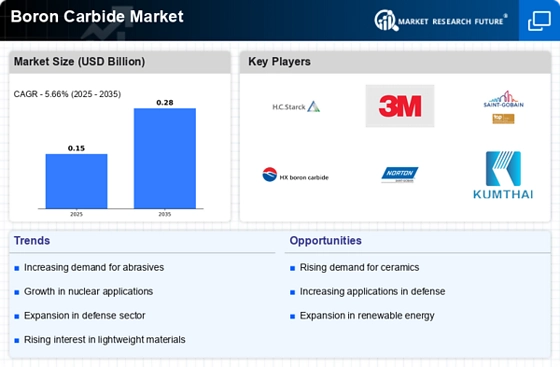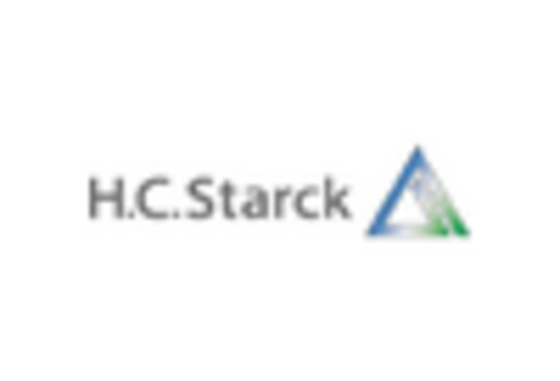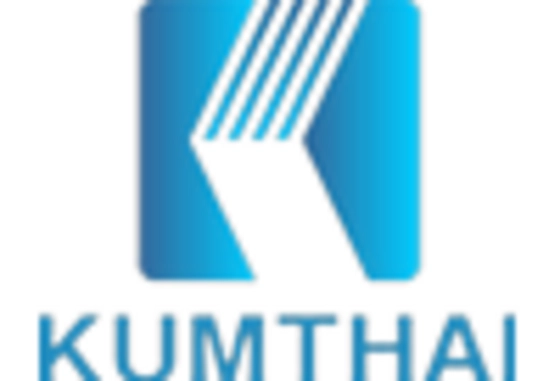Increasing Use in Abrasives
The Boron Carbide Market is experiencing a notable increase in demand for abrasives, particularly in the manufacturing and metalworking sectors. Boron carbide, known for its hardness and durability, is utilized in grinding wheels, cutting tools, and other abrasive applications. The market for abrasives is projected to grow at a compound annual growth rate of approximately 5.2% over the next few years, driven by the rising need for precision machining and surface finishing. This trend indicates a robust potential for boron carbide, as its unique properties make it an ideal choice for high-performance abrasive products. As industries continue to prioritize efficiency and quality, the Boron Carbide Market is likely to benefit from this growing demand.
Rising Demand in Electronics
The Boron Carbide Market is witnessing a surge in demand from the electronics sector, particularly in the production of semiconductors and electronic components. Boron carbide is utilized in various applications, including as a dopant in semiconductor manufacturing and in the production of high-performance electronic devices. The electronics market is projected to grow at a rate of 6% annually, driven by the increasing adoption of smart technologies and the Internet of Things. This trend suggests a significant opportunity for the Boron Carbide Market, as manufacturers seek materials that enhance performance and efficiency in electronic applications. The integration of boron carbide into electronic components may lead to improved device reliability and longevity.
Growth in Automotive Industry
The Boron Carbide Market is likely to benefit from the growth in the automotive sector, where boron carbide is increasingly used in lightweight materials and advanced composites. As automotive manufacturers strive to enhance fuel efficiency and reduce emissions, the demand for lightweight materials has surged. Boron carbide's exceptional strength-to-weight ratio makes it an attractive option for various automotive applications, including armor plating and structural components. The automotive industry is expected to grow at a compound annual growth rate of around 4.5%, which may further drive the adoption of boron carbide in vehicle manufacturing. This trend indicates a promising outlook for the Boron Carbide Market as it aligns with the industry's focus on innovation and sustainability.
Advancements in Nuclear Technology
The Boron Carbide Market is poised to gain traction due to advancements in nuclear technology. Boron carbide is widely recognized for its neutron-absorbing capabilities, making it a critical component in nuclear reactors and radiation shielding applications. As countries invest in nuclear energy as a cleaner alternative to fossil fuels, the demand for boron carbide is expected to rise. Recent estimates suggest that the nuclear energy sector could expand by 3.5% annually, further propelling the need for boron carbide in various applications. This growth reflects a broader trend towards sustainable energy solutions, positioning the Boron Carbide Market favorably in the context of global energy transitions.
Emerging Applications in Medical Technology
The Boron Carbide Market is exploring emerging applications in medical technology, particularly in radiation therapy and diagnostic imaging. Boron carbide's unique properties make it suitable for use in radiation shielding and as a neutron capture agent in cancer treatment. As the healthcare sector continues to advance, the demand for effective materials in medical applications is expected to rise. The medical technology market is projected to grow at a rate of 5.8% annually, indicating a potential increase in the use of boron carbide in various medical devices and treatments. This growth reflects a broader trend towards enhancing patient care and treatment efficacy, positioning the Boron Carbide Market as a key player in the evolving landscape of medical technology.


















Leave a Comment